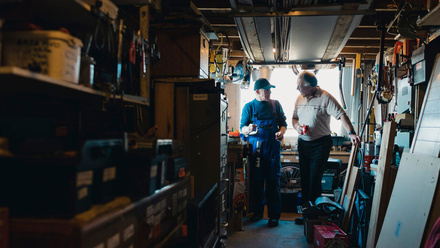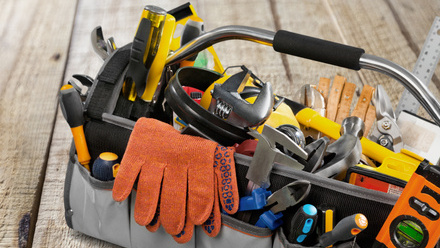*Sponsored content contributed by iDefigo Limited.

The construction and building industry is and continues to be easy prey for opportunistic thieves and vandals which can be very costly and a particularly difficult problem to manage when faced with no electricity or communications on site. Without a doubt an insecure building site will attract thieves. As you probably know from your own experience, small disruptions lead to delays, setting off a domino effect that will most probably damage your bottom line and your reputation.
It is estimated theft and vandalism within the UK construction industry costs the sector over £800 million per year. This is probably a conservative figure when many crimes go unreported. A survey conducted by the Chartered Institute of Building revealed that 92% of respondents were directly affected by petty crime, with 21% stating that their construction sites were robbed on a weekly basis. Theft of vehicles and machinery is common, whilst building sites are also a popular target for the theft of metals – with over 7,000 metal-related thefts recorded per month. There’s no doubt that theft is an on-going issue within the industry which will continue to grow.
As well as the replacement cost there are of course expenses that also need to be considered such as hiring new equipment until the equipment in question has been replaced, time delays due to having to halt or delay work and higher insurance costs. Expensive, heavy machinery and building tools can be sold on for a handsome profit. What’s more, the recovery rate of plant machinery in the UK is just 9%, compared with a 50-60% recovery rate of motor vehicles. These statistics are a worry. Despite this growing crime rate construction site owners, managers and contractors often find that building a network of fixed wire surveillance cameras or employing security staff can be prohibitively expensive.
What can I do to mitigate the problem?
The main issue comes down to security, or perhaps the lack of it. Security measures on plant machinery are imperative. Additional issues on top of security could well be site monitoring, visual management of projects, health and safety compliance, management of contractors and staff and that of anti-social behaviour, which could include vandalism, graffiti, and fly tipping.
- Removing keys from ignitions and using padlocks and chains is simply not enough to keep the thieves at bay. Materials should be locked away where possible, but buildings and storage areas are of course also perhaps not as secure as they need to be.
- Maintaining a controlled entry and exit system should be at the forefront of any on-site security programme as you want to have a clear view of who is entering and exiting the site, from in-house staff members to external contractors. Adding site security barriers from a reputable security company can reduce the ‘openness’ of a site and act as a visible deterrent to potential thieves.
- Investing in security such as immobilisers and tracking systems for plant equipment is one obvious solution, but it’s just as important to advertise the equipment has this security onboard to deter opportunistic thieves. 65% of those surveyed by the Chartered Institute of Building claimed that the tracking of plant vehicles was an effective measure, with a further 23% admitting that they had not tried this form of security device.
- Educating staff on working practices and crime can also help, and should include information on securing on-site vehicles and machinery. If site staff are aware of risks and dangers more can be done to minimise theft.
The value of CCTV as a security measure
Another major deterrent would also be the implementation of CCTV cameras and bright lighting; not only to protect against theft, vandalism, graffiti and fly tipping but also for compliance reasons. CCTV has the benefits of sensing and alerting you to suspicious behaviour in addition to recording it, which could be used as evidence in case you pursue prosecution. It is usually true though that as sites grow it can be inconvenient and costly to move a hard-wired system to accommodate the changing landscape and new blind spots. In these instances, a wireless system is particularly useful.
CCTV and image capture can also offer insight into Business Intelligence; workflow automation at sites, building quality management and vehicle management (the automation and monitoring of vehicle access entering and exiting sites). Health and Safety should always be a priority on-site - so wouldn’t it be great to monitor how well this is being practised across your sites?
What if you don’t have on-site electricity, Wi-Fi or other communications, making CCTV in its powered and networked form impossible? iDefigo, a leader in rapidly deployable IoT-based visual intelligence, offers instant security and protection before power and broadband are available on-site through a fully mobile camera surveillance solution that can literally be located anywhere you need it. Running off either batteries or solar-power, the system delivers high quality images over the Vodafone mobile network to iDefigo’s powerful cloud platform. Here AI (Artificial Intelligence) is utilised and image analytics information is extracted so you can use it to enhance to protect your business. All of this is viewable through your personal dashboard to see and view your footage in real time.
Case study: Securing HS2
In light of the combined with the risks of plant machinery theft and the security challenges posed by HS2 protestors (costing some £75m to date), smart remote battery or solar powered cameras with communications provided via Vodafone SIMs have been deployed by key contractors to address a range of challenges that require monitoring and protection including the following:
- Monitoring remote perimeters
- Protecting vacant and empty property
- Monitoring expensive plant machinery
- Monitoring site access points
This smart camera solution is easy to self-install and move as the site evolves without wires getting wrapped around scaffolding and without the health and safety hazards of cables being cut. With this solution the security team can rapidly respond to ongoing events when they occur.
In addition, visual evidence has been captured and studied to aid in the investigation of perimeter breaches; currently a significant issue for HS2.
A key benefit is that it provides the security team a means to rapidly shore up vulnerable parts of the site, works and strategic assets in a fast, cost-effective manner. This solution is provided by iDefigo in association with Vodafone.
How a Smart Wireless Camera helps you:
-
You can set up multiple cameras with different fields of view of a construction site to record footage at defined intervals so that stakeholders always have a real-time view of progress and contractor activity
-
You can produce a time-lapse video for promotional purposes. Unlike with other video capture solutions, the footage is sent directly to the camera’s cloud platform, saving you the hassle of having to manually collect recordings
-
As the Smart Wireless Camera is mobile-first, you can access it whether you’re in an office or out and about, giving you peace of mind, wherever you are
iDefigo’s Trends in Construction Site Security & Surveillance 2021 guide can be downloaded via their website for free.
To find out more about iDefigo’s exciting award-winning family of mobilised cameras and how they can help with your remote security issues please contact iDefigo at [email protected] or call 0118 315 0125.
*Disclaimer: This blog post is contributed content, which is independent of the FMB. Publication does not constitute endorsement or recommendation from the FMB.





